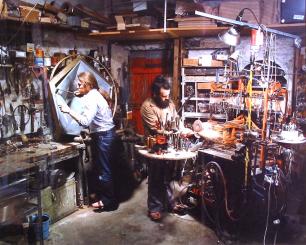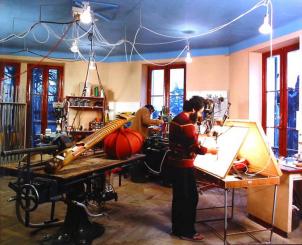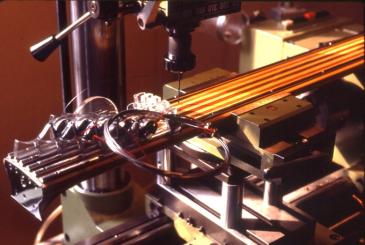- 1967 - 2008
- Master of Art
- 40 years of research and discoveries
- A craftsman’s world
- From one workshop to another
I probably would not have been able to take the adventure this far had I stayed on my own. Meeting other musicians asking themselves the same questions as myself, also seeking new horizons, would lay down the basis of a whole work of ongoing research.
In 1967 we founded a group called Horde Catalytique pour la Fin (The Catalytic Horde for the End) (Jacques Fassola, François Bourlier, Gilbert Stuerga, Richard Accart). We wanted the sound, the material of sound before it was altered and moulded by a cultural code. We also wanted to explore music from around the world and what it could reveal of the musical universe. The Horde adventure lasted over five years, and following this, keeping the same ideas in mind, I formed, with François Bourlier and Badra-Caïs Ménassieu, a group called Arthéa with which I still work.
LISTENING
Listening to sounds, observing and exploring them, is the basis of my work. Listening to the harmonic flows of a piece of beaten duralumin, comparing them to those emitted by a hard block of wood, enjoying the beautiful sound of bamboo or rock, discovering how polycarbonate is an excellent transmitter and Plexiglas a phonic absorbent and reflector, trying to understand how these materials vibrate and how to use them: a whole unexplored universe awaits us and it never ceases to amaze us.
EXPLORING INTERVALS
Exploring musical intervals has also been an important part of my research. Our ears have been conditioned to hear a range of twelve tones. From these twelve tones, art music and popular music have created masterpieces. However, other ways of dividing sound exist throughout the world, ranges other than the twelve equal halftones, intervals between tones other than the halftone.
















